You are here
- Home
- Grow your food as an act of sustainability for a far-reaching impact
Grow your food as an act of sustainability for a far-reaching impact
COP27 is the first COP to place food and the transformation of agrifood systems as an important part of the solution to create climate safety. The 2022 Global Report on Food Crises from the FAO finds that 193 million people faced acute global food insecurity in 53 countries. Climate impacts have reduced production and threatened the livelihoods of smallholders, and conflicts have disrupted supply chains placing the most vulnerable populations more at risk.
If you look at our planet on Google Earth, you can note that a large proportion of land worldwide is managed to produce food, impacting land and water systems, habitats and biodiversity. Food is planted, cared for, harvested, stored, packed and transported, sometimes incredible distances, before it appears in the stores. For much of our food, intensive farming practices are used and this process is not only unsustainable in terms of land use as it erodes our soils, it is also dependent on fossil fuels and synthetic fertilisers to increase yields and keep pests away. The system also creates large amounts of food waste (in the storage and handling of food as well as from perishability of food), along with packaging waste. The current food system is a global one. It pressures farmers to produce more food for lower cost in order to compete in the global food market. Yet, our food is becoming of lower nutritional density. In fact, agriculture, food and land use is the largest emitter of greenhouse gas emissions – 25% in total.
However, we can all opt out from supporting such a system by choosing to buy seasonal food from sustainable and regenerative farmers in our localities and also by growing our own food. This brings benefits for climate, health, resilience, biodiversity and social justice, as well as the ability to sequester carbon in healthy soil. If you don’t know where to start, our STEM Research Technician Dr Radka Gromnicova shares her experiences of food growing near the MK campus. Her advice can be scaled to the space available to you, whether that’s your kitchen window sill, garden or, like Radka, an allotment.

Harvests of fresh carrots
How to start
Pick a growing site and consider how much time you can dedicate
If you can, make sure the aspect is sunny, ideally not north-facing. Also note trees, tall hedges, fences which may shade your growing space. Ideally, your food-growing site should get the most sun your garden can offer.
Your growing space is precious – no matter the size. Sometimes, you can be more efficient and micro-manage a small space better than you can a large area, getting two or more crops from the same bed with tight succession. If you have only a small space, consider a polytunnel or a greenhouse as growing under cover is more time, space and effort efficient.
The amount of time you can invest into your growing space throughout the year is a key consideration. There will be weeds growing. The plants will need watering every other day. The crop will need harvesting at the right time. All these activities influence how successful you’ll be in managing your growing space and supplying your household with homegrown food.
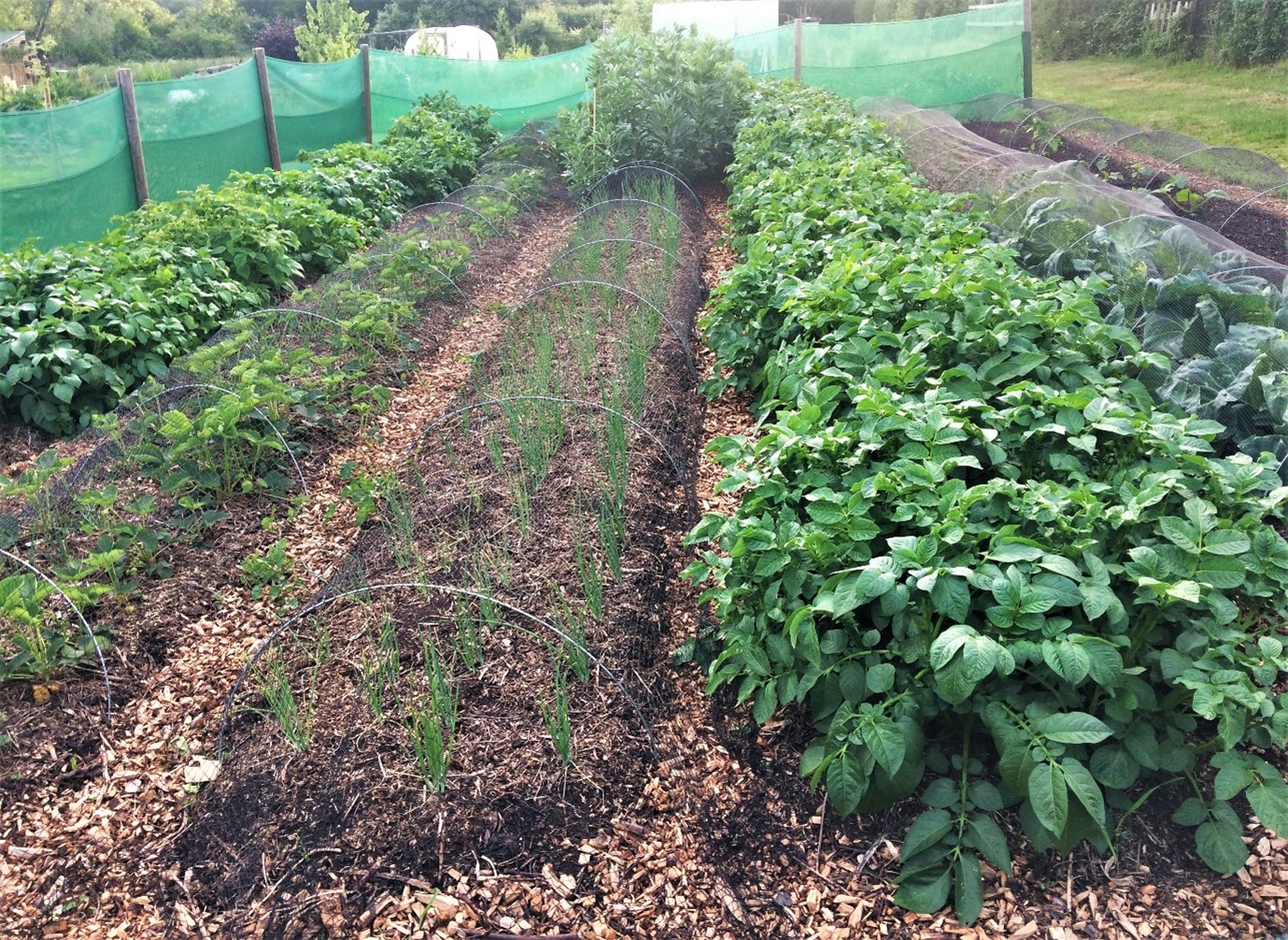
Growing staple crops in the allotment (from left potatoes, strawberries, onions, potatoes, cabbages, squash)
Pick your crops – the staples you eat most of and are easy to grow
Keep it simple, don’t try growing anything fancy, until you’re skilled enough to experiment with unusual crops.
-
Potatoes – the easiest to grow. They store well either in compost, no dig beds where they grew, or in an outdoor shed in paper sacks for 6+ months
-
Onions – easy to grow. They store well in a well-ventilated unheated room for 9 months
-
Squash/pumpkin – easy to grow. Hard-skinned varieties store well in an unheated room for up to a year.
-
Sweet peas – easy to grow. More work to process them as they usually all ripen at the same time and need shelling, blanching and freezing.
-
Broad beans – easy to grow. The most productive are the autumn-sown varieties. Harvest shell, blanch and freeze
-
Carrots – need more work to protect germinating seedlings and once grown, need thinning out for a good crop. Store well either in the bed they grew in or in paper sacks in a shed.
-
Parsnip – more work to thin once germinated. Stores well in the ground until the spring, then can be cleaned, chopped up, blanched and frozen.
-
Other – other crops can fill a gap between main harvests, ranging from salad leaves to brassicas, fennel to celery.
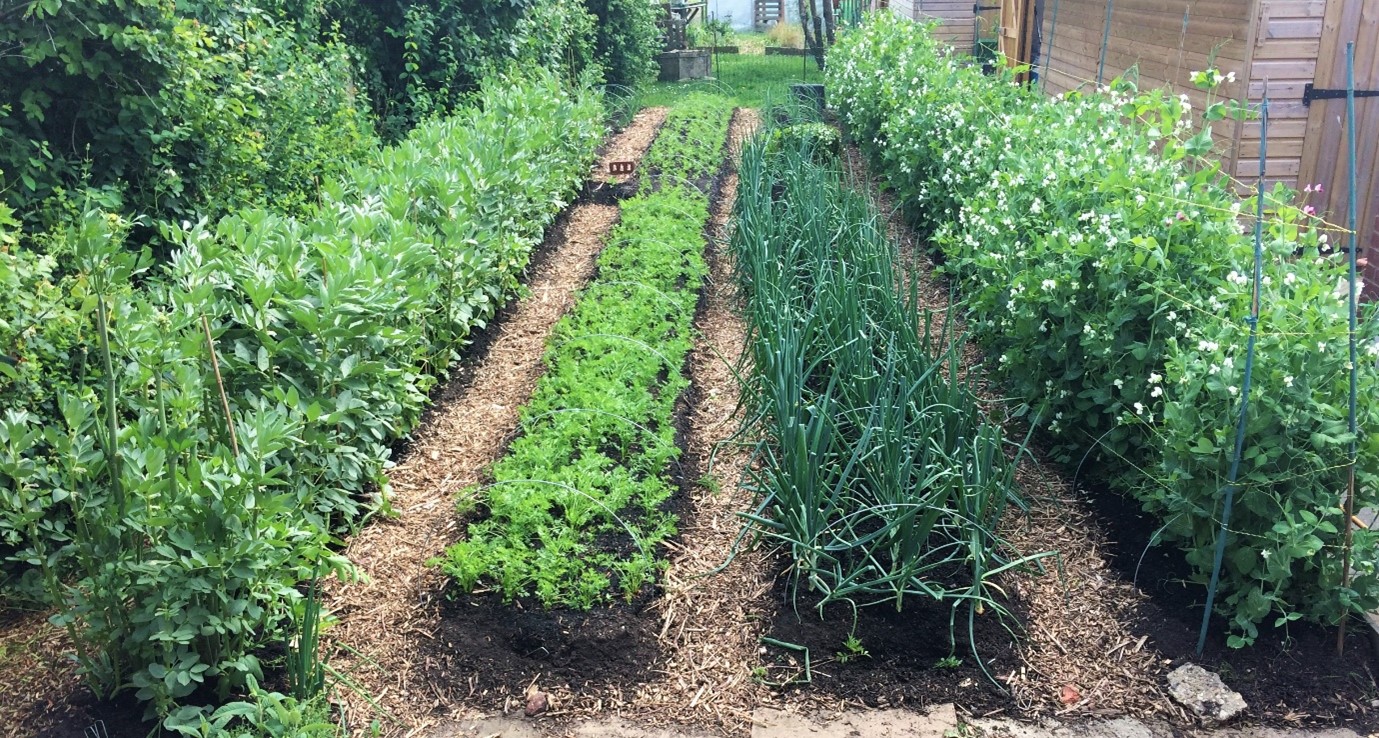
From left broad beans, carrots, onions, sweet peas
Plan for two seasons of crops, each bed each year
This means harvesting a main crop in the summer and planting or seeding another crop straight afterwards, which can be harvested throughout the autumn. This makes for efficient use of space and resources. For example, potatoes, onions, peas can be followed by cauliflower, pointed spring cabbage, summer lettuce, spinach and other baby leaves or autumn carrots.
After your first growing year, you’ll have a better idea of yields and how long they lasted you in the kitchen. Thus, you can estimate how much bed space you would need if you grew your whole year’s supply. You can then decide which crop grew best/easiest in your hands and focus on it in the following years.
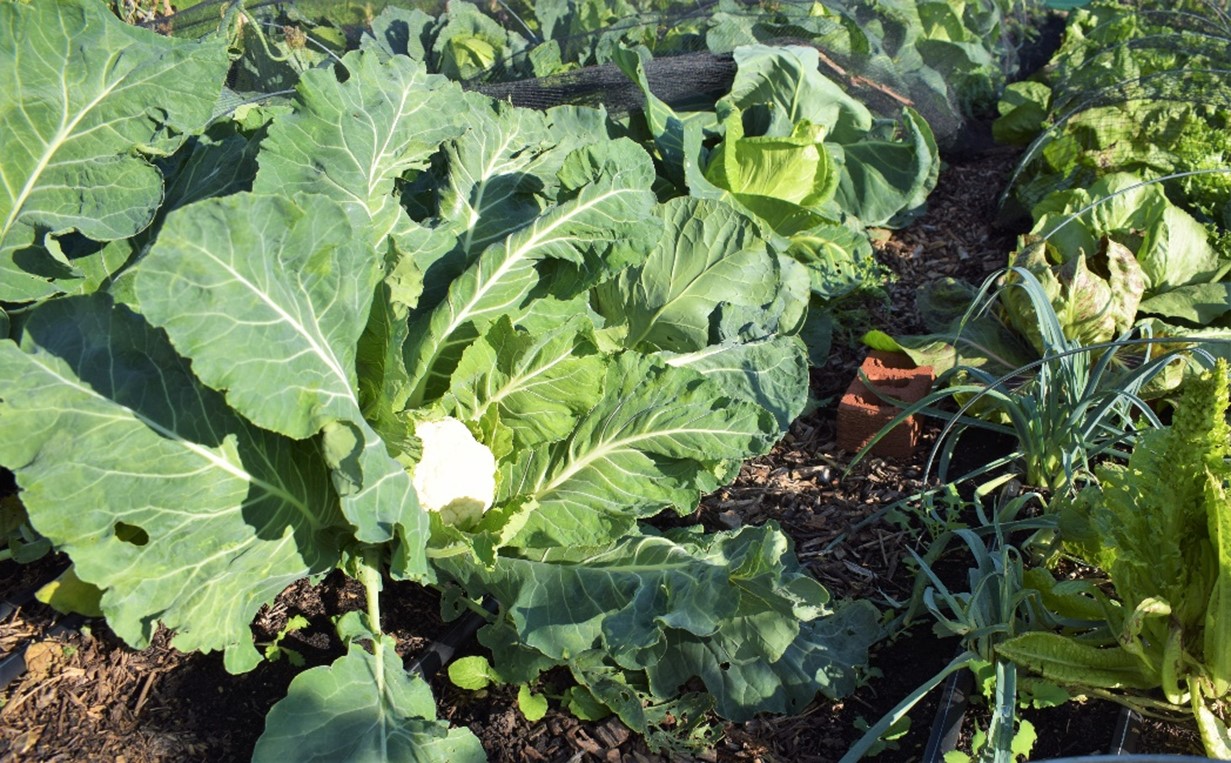
Autumn harvests of cauliflowers, pointed cabbage, leeks, chicory hearts and lettuce from plantings after main summer harvests of potatoes and onions
Automating growing systems where possible
Growing food alongside our busy lives is not just a dream, for those who have free time. The information age makes food growing time- and effort-efficient. Online, you can learn advanced techniques for growing food which will make your efforts worthwhile.
Growing food with no weeding or digging
A no-dig system, advocated by Charles Dowding and Stephanie Hafferty, uses compost as a mulch which supresses weeds, and creates a stable system, like a forest floor. Investment into a large quantity of ISO certified compost is needed - having a growing space with barely any weeding to do, makes it worth the investment.
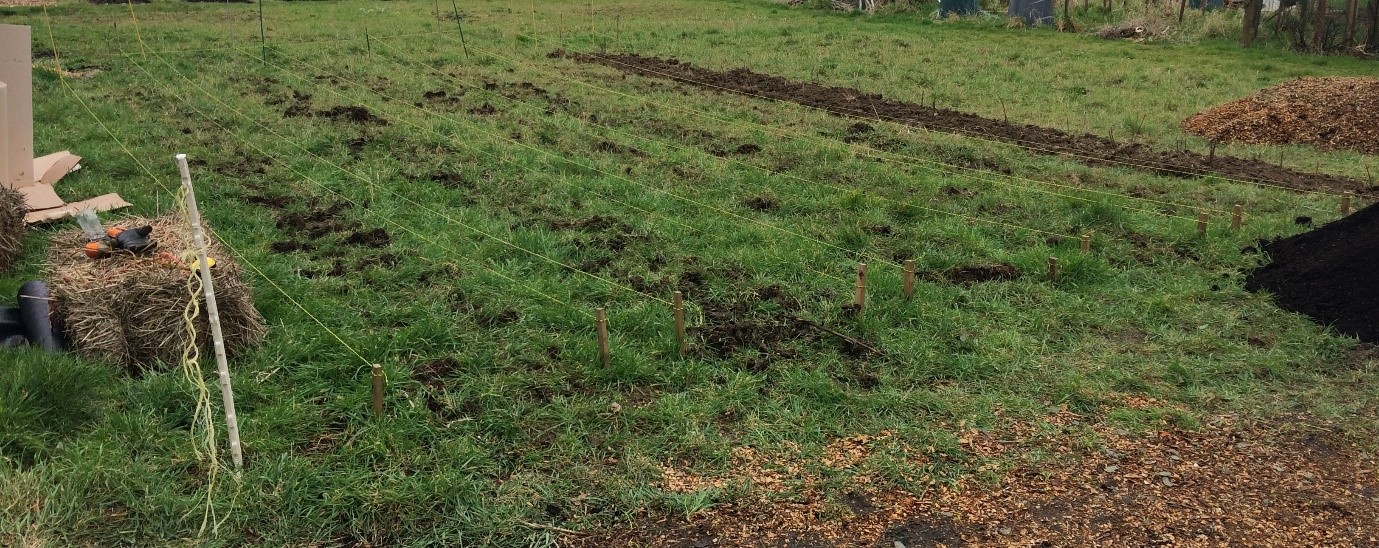
Starting a new plot straight on grass, no-dig style. Cardboard is laid on first, then a 20 cm deep layer of compost on top
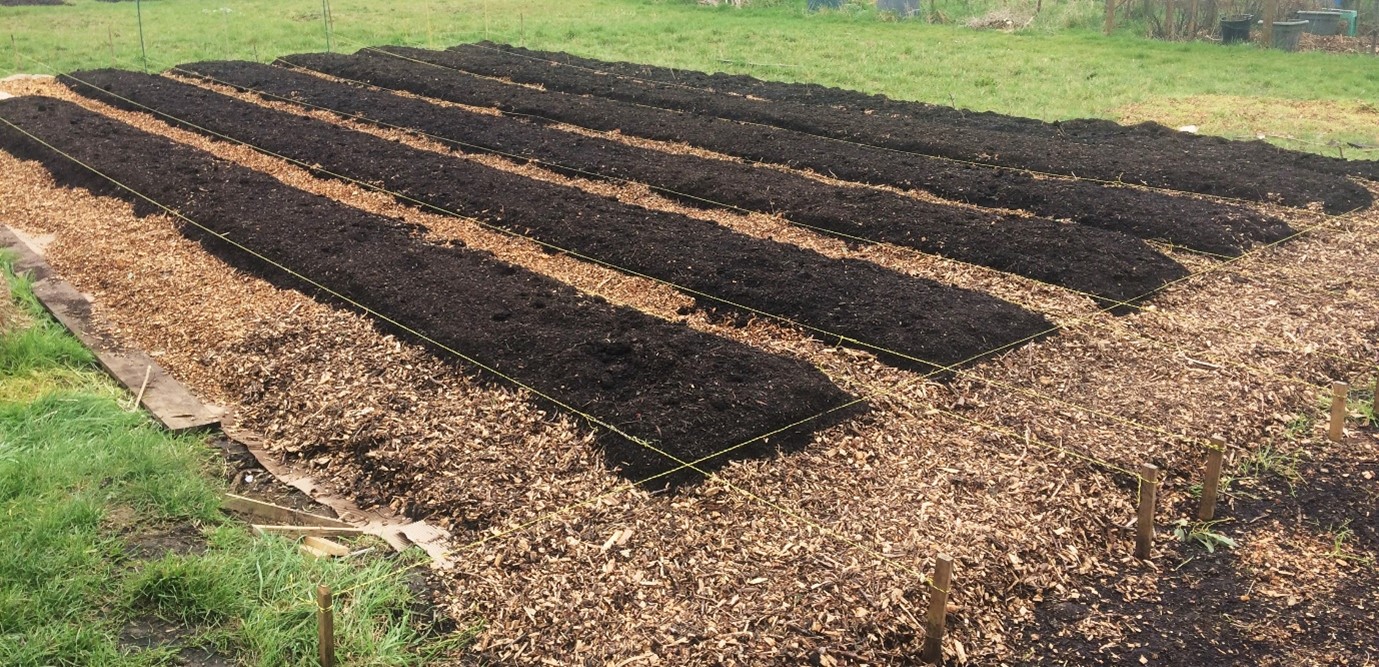
After compost was placed on cardboard (visible on the left), woodchips are used as weed-free all-weather pathways between and around the beds
Automated watering system
In the dry months, even in the UK, a rain harvesting and irrigation system is invaluable. Drip irrigation, whilst a more costly investment and taking time to initially set up is the most efficient, using less water, penetrating deep into the soil and not providing a breeding ground for slugs and snails, as the surface of the soil remains relatively dry. Overhead (sprinkler) irrigation is cheap and easier to set up, however, it uses more water, and wets the leaves, which encourages slugs and fungal diseases.
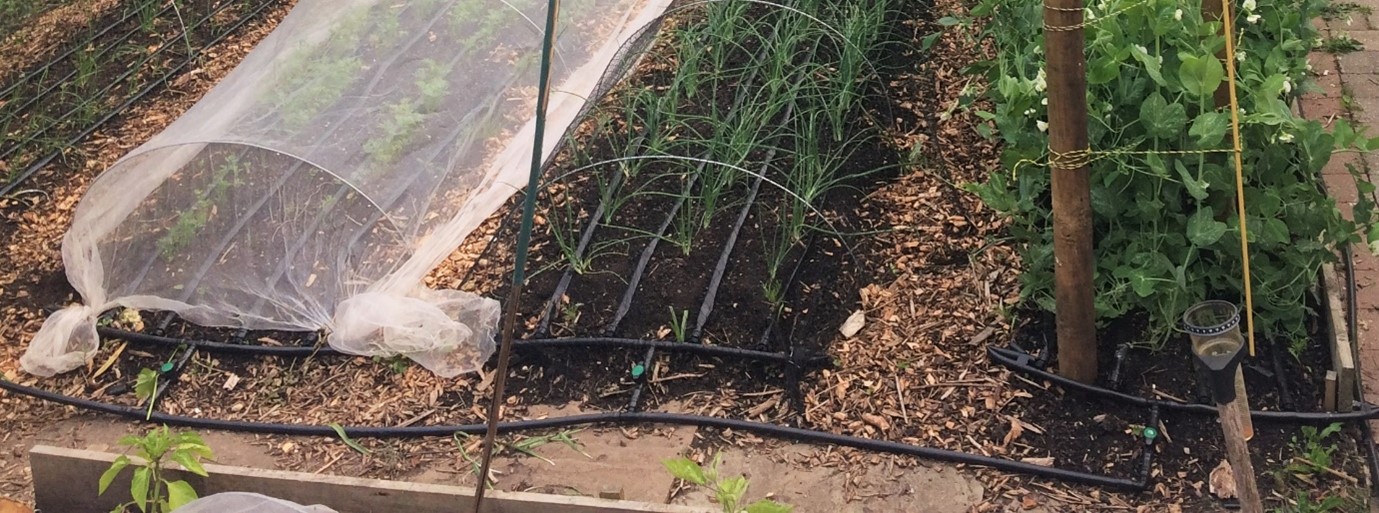
Drip irrigation system set on a timer saves time and gives peace of mind. Here, the main pipe goes to a switch-isolated header that connects to drip tapes that lay on the surface between rows of plants.
Polytunnels
Growing crops in a polytunnel saves time and effort. It’s faster to get yields, and plan three different crops each season, plus it’s easier to monitor for pests and problems. Plants need more watering and an automated system is helpful.
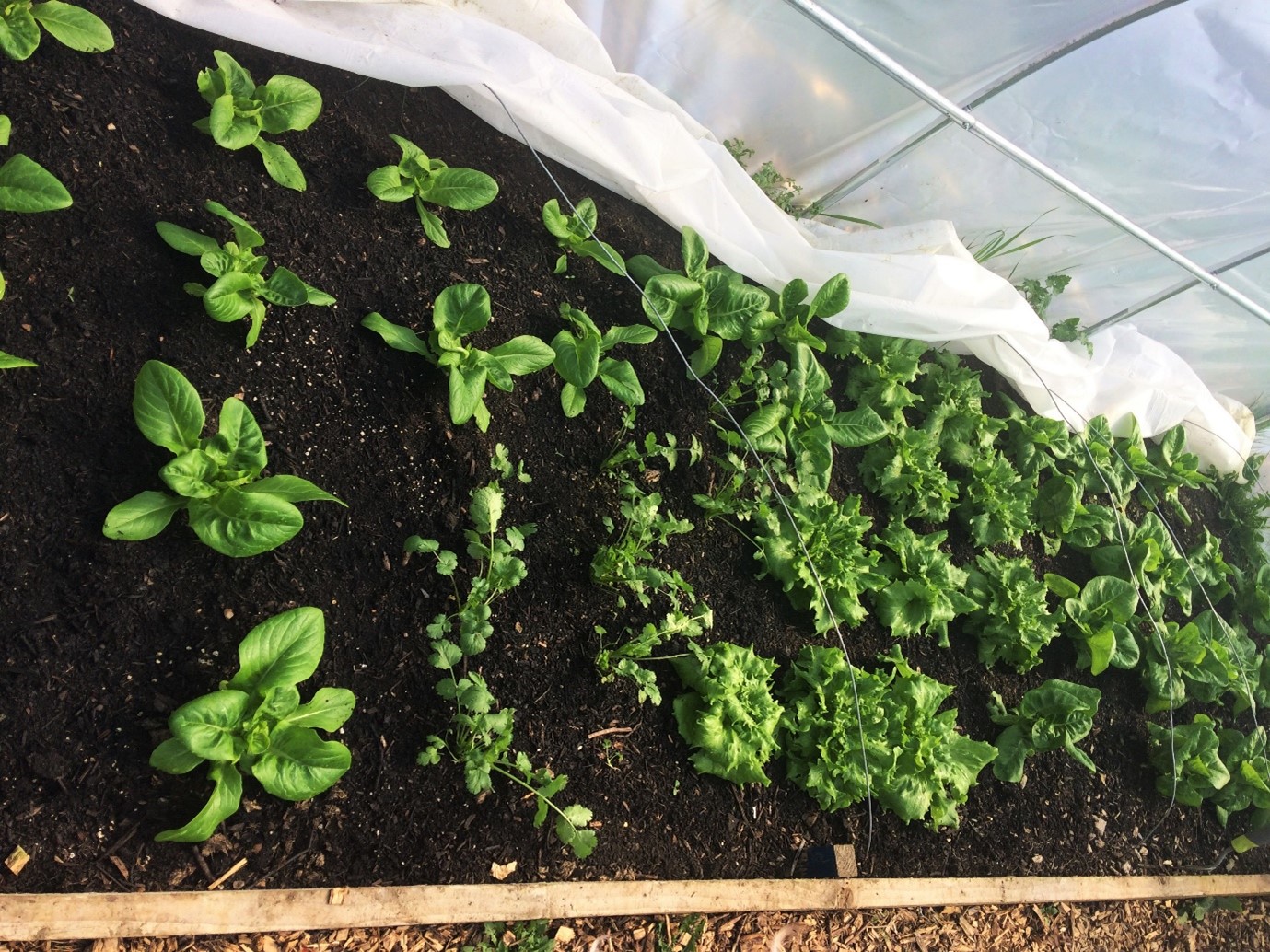
Polytunnels allow more vegetables to be produced in quicker succession and extend the season of crops, so you can start earlier or finish later in the year. Here, February lettuces and herbs from late autumn plantings for extra early harvests
Seedling nursery
A few cabinet strip lights, a dedicated shelf in a corner at home and you can grow yourself high-quality seedlings all year round. Then, you’re ready to plant out vegetable seedlings just after harvesting a crop. Very useful during early spring and autumn, when light levels and temperatures drop too low for successful seedling growing outside.
Moreover, microgreens and salad greens can be grown in this way in the depth of winter. These are baby greens which you harvest about two weeks after seeding.
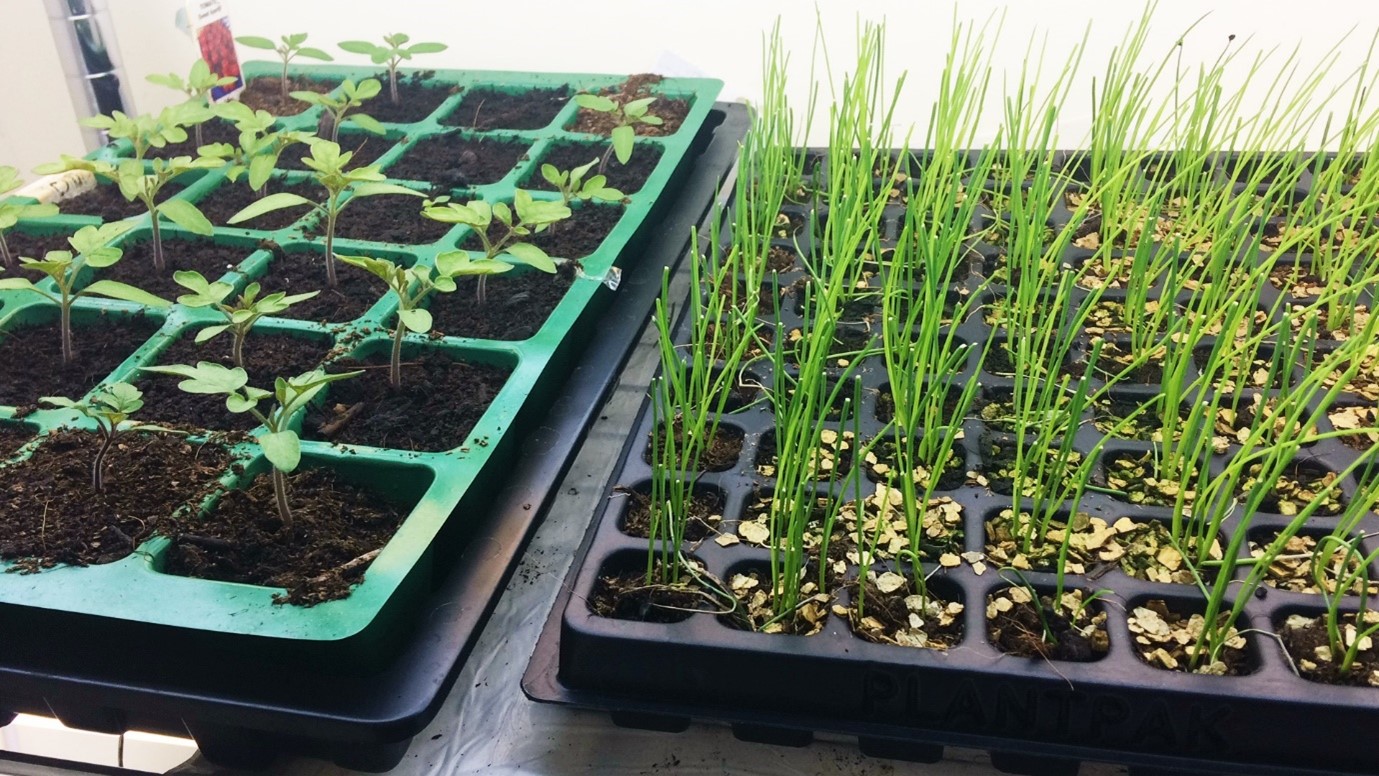
Producing your own seedlings under automated light system is another space and time-saving technology. Here, tomatoes on left, onions on right on a shelf under four strips of basic LED cabinet lights, in an otherwise dark corner of a room.
Growing food is a learning curve. The more you experiment, and the longer you do it, the better you’ll become. You’ll improve at choosing varieties of seeds to grow and when to best grow them, grow better quality seedlings, understand pests and how to prevent them, when to best harvest and how to waste less of what you grow. You’ll learn how to clean, prepare and store the crops so your harvest looks like that from the shop, clean and blemish-free, yet tastes so much better.
In the end, it is the skill of self-reliance, independence from the food system, and the freshness and quality of food you’ll be eating that makes it worth doing.
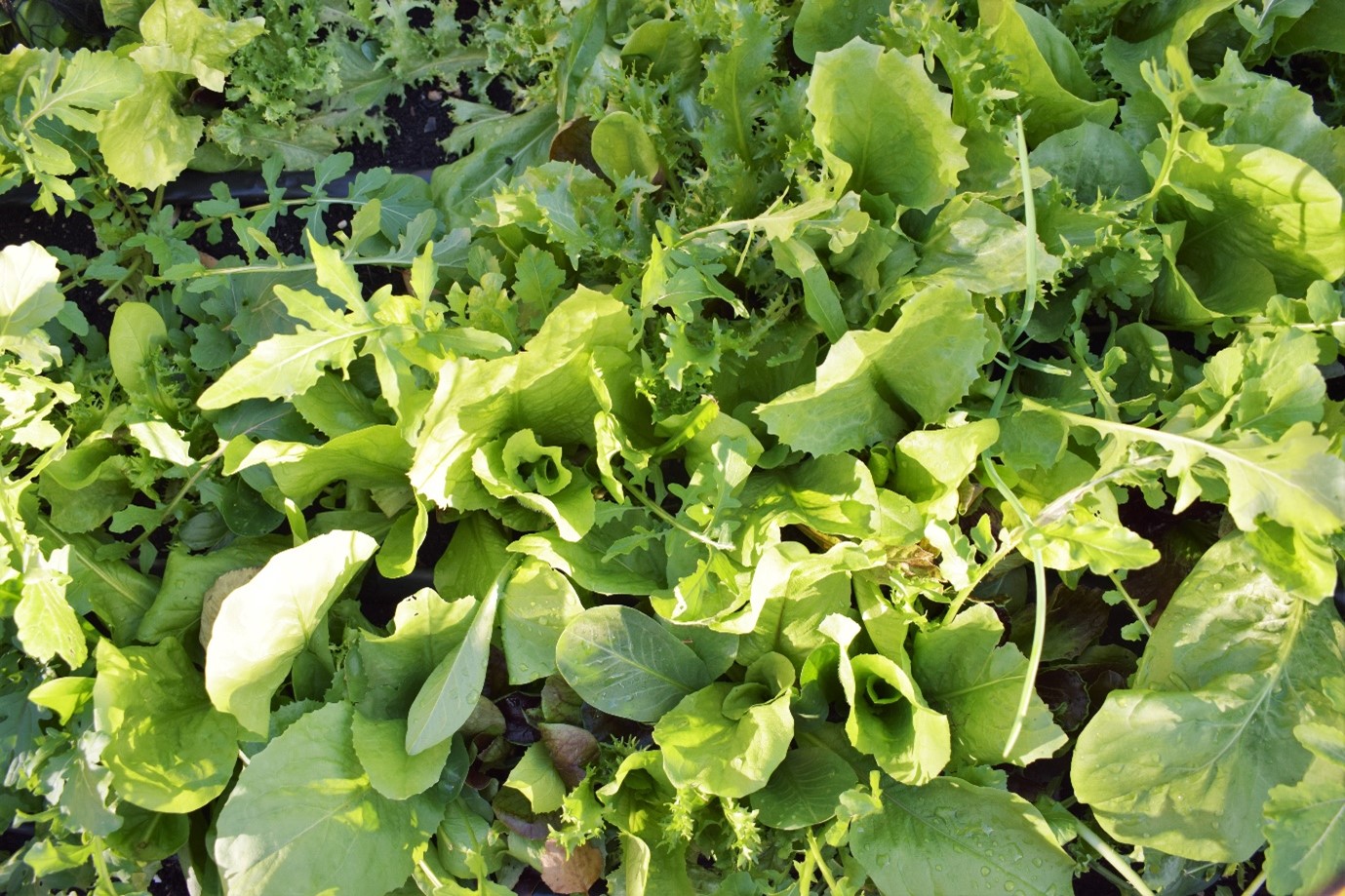
Autumn/winter baby leaf salads seeded in late summer crop through the winter for a regular supply of fresh leaf lettuce similar to ones you can buy in a bag in a shop.
“A person who is growing a garden, if he is growing it organically, is improving a piece of the world. He is producing something to eat, which makes him somewhat independent of the grocery business, but he is also enlarging, for himself, the meaning of food and the pleasure of eating.” ― Wendell Berry
This article is an opinion piece that was been written by Dr Radka Gromnicova, Electron Microscopist (Faculty of Science, Technology, Engineering & Mathematics) at The Open University, as a response to a call for articles from our OU colleagues, that relate to climate change from their own disciplinary or lived experience.
Related articles
- Reducing your carbon footprint this Festive Season 28th October 2024
- Accelerating Ambition and Impact: EAUC Conference 2024 30th July 2024
- Driving change: Imagining a different transport future 23rd July 2024
- Donating items to MK Food Bank 21st July 2024
- Butterflies as indicators of our impacts on nature - Climate Perspectives 9th July 2024